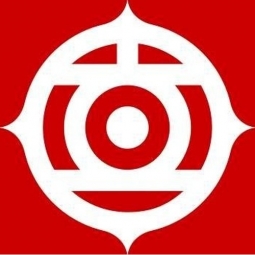下载PDF
Accelerating Medical Research and Testing with IoT: A Case Study of Karolinska Institutet
技术
- 基础设施即服务 (IaaS) - 云数据库
- 平台即服务 (PaaS) - 应用开发平台
适用行业
- 生命科学
- 药品
适用功能
- 产品研发
- 质量保证
用例
- 施工管理
- 基础设施检查
服务
- 系统集成
- 测试与认证
挑战
卡罗林斯卡学院是一所领先的医科大学,其任务是加速对慢性疾病和人类微生物组对生殖健康影响的研究。这项研究是计算和内存密集型的,需要灵活的计算能力来处理不可预测到达的大批量样本。 2020年,瑞典政府还委托该大学的转化微生物组研究中心(CTMR)建立一个新的国家流行病中心(NPC),以加强瑞典对COVID-19的应对措施。 NPC 每周负责分析约 45,000 份基于 PCR 的 COVID-19 检测,使其成为瑞典最大的 SARS-CoV-2 分析实验室设施之一。然而,CTMR 在两台物理服务器上以静态配置运行 IT 服务和分析作业,没有虚拟化或扩展能力,这构成了重大挑战。
关于客户
卡罗林斯卡学院是世界领先的医科大学之一,为改善人类健康做出贡献,每年发表 6,000 多篇经过同行评审的科学出版物。该大学在学术界拥有独特的地位,因为卡罗林斯卡学院的诺贝尔大会负责评选诺贝尔生理学或医学奖获得者。卡罗林斯卡学院微生物学、肿瘤和细胞生物学系的转化微生物组研究中心 (CTMR) 是与 Ferring Pharmaceuticals 建立的创新型公私合作伙伴关系,Ferring Pharmaceuticals 是一家总部位于瑞士、扎根于瑞典的研究驱动型专业生物制药公司。
解决方案
为了应对这一挑战,Hitachi Vantara 联系 CTMR 以支持 COVID-19 研究和测试。他们为 CTMR 设计了融合基础设施解决方案,结合日立虚拟存储平台 F370 阵列部署了日立统一计算平台 CI 解决方案。该解决方案集成了计算、存储、网络和管理软件,并通过使用VMware虚拟化动态调整资源提供了高度的灵活性。 Hitachi Unified Compute Platform Advisor 软件简化了系统管理和自动化管理任务。该团队还可以部署和使用标准 HPC 工具(例如 Slurm)来跨虚拟化服务器基础设施进行集群管理和作业调度。 Hitachi Vantara 与其合作伙伴思科和 VMware 合作,向 CTMR 提供全面贷款,以加快实施速度。该解决方案满足大学中央 IT 的严格规则和要求,并安装在大学的主要数据中心设施之一。
运营影响
数量效益
相关案例.

Case Study
Case Study: Pfizer
Pfizer’s high-performance computing software and systems for worldwide research and development support large-scale data analysis, research projects, clinical analytics, and modeling. Pfizer’s computing services are used across the spectrum of research and development efforts, from the deep biological understanding of disease to the design of safe, efficacious therapeutic agents.

Case Study
Fusion Middleware Integration on Cloud for Pharma Major
Customer wanted a real-time, seamless, cloud based integration between the existing on premise and cloud based application using SOA technology on Oracle Fusion Middleware Platform, a Contingent Worker Solution to collect, track, manage and report information for on-boarding, maintenance and off-boarding of contingent workers using a streamlined and Integrated business process, and streamlining of integration to the back-end systems and multiple SaaS applications.

Case Study
Process Control System Support
In many automated production facilities, changes are made to SIMATIC PCS 7 projects on a daily basis, with individual processes often optimised by multiple workers due to shift changes. Documentation is key here, as this keeps workers informed about why a change was made. Furthermore, SIMATIC PCS 7 installations are generally used in locations where documentation is required for audits and certification. The ability to track changes between two software projects is not only an invaluable aid during shift changes, but also when searching for errors or optimising a PCS 7 installation. Every change made to the system is labour-intensive and time-consuming. Moreover, there is also the risk that errors may occur. If a change is saved in the project, then the old version is lost unless a backup copy was created in advance. If no backup was created, it will no longer be possible to return to the previous state if and when programming errors occur. Each backup denotes a version used by the SIMATIC PCS 7 system to operate an installation. To correctly interpret a version, information is required on WHO changed WHAT, WHERE, WHEN and WHY: - Who created the version/who is responsible for the version? - Who released the version? - What was changed in the version i.e. in which block or module of the SIMATIC PCS 7 installation were the changes made? - When was the version created? Is this the latest version or is there a more recent version? - Why were the changes made to the version? If they are part of a regular maintenance cycle, then is the aim to fix an error or to improve production processes? - Is this particular version also the version currently being used in production? The fact that SIMATIC PCS 7 projects use extremely large quantities of data complicates the situation even further, and it can take a long time to load and save information as a result. Without a sustainable strategy for operating a SIMATIC PCS 7 installation, searching for the right software version can become extremely time-consuming and the installation may run inefficiently as a result.

Case Study
Drug Maker Takes the Right Prescription
China Pharm decided to build a cloud-based platform to support the requirements of IT planning for the next five to ten years which includes a dynamic and scalable mail resource pool platform. The platform needed to have the following functions: all nodes support redundancy, ensuring service continuity and good user experience, simple and easy-to-use user interfaces for end users and administrators and good compatibility and supports smooth capacity expansion.

Case Study
ELI LILLY ADOPTS MICROMEDIA’S ALERT NOTIFICATION SYSTEM
Pharmaceutical production is subject to a strict set of enforced rules that must be adhered to and compliance to these standards is critically necessary. Due to the efforts of WIN 911’s strategic partner Micromedia, Lilly was able to adopt an alarm notification infrastructure that integrated smoothly with their existing workflows and emergency hardware and protocols. These raw energy sources enable the industrial process to function: electricity, WIN-911 Software | 4020 South Industrial Drive, Suite 120 | Austin, TX 78744 USA industrial steam, iced water, air mixtures of varying quality. Refrigeration towers, boilers and wastewater are monitored by ALERT. Eli Lilly identified 15000 potential variables, but limitations compelled them to chisel the variable list down to 300. This allowed all major alarms to be covered including pressure, discharge, quantity of waste water discharged,temperature, carbon dioxide content, oxygen & sulphur content, and the water’s pH.






